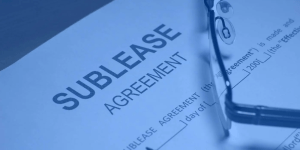Raising the rent is a standard part of managing a rental property, but it must be done legally and precisely according to the rules set out in the Residential Tenancies Act (RTA). In Ontario, the official document used to notify a tenant of a rent increase is the N1: Notice of Rent Increase.
This form isn’t optional—it’s the only way to legally communicate an increase to your tenant. Failure to use the correct, completed N1 form invalidates the rent increase.
The Three Golden Rules for Using the N1 Form
To ensure your rent increase is legal and enforceable, you must adhere to three strict requirements:
1. Follow the Guideline (For Rent-Controlled Units)
The provincial government sets an annual rent increase guideline. This is the maximum percentage by which a landlord can increase the rent for most existing tenants in rent-controlled units without applying to the Landlord and Tenant Board (LTB).
- Check Annually: This percentage changes every year and applies to the entire 12-month period. You must use the guideline applicable to the date the increase is set to take effect.
- Exemptions: Some newer buildings (first occupied after November 15, 2018) are exempt from the rent increase guideline, allowing the landlord to set their own increase amount, but the other rules (timing and form) still apply.
2. Provide 90 Days’ Notice (Timing)
You must deliver the N1 form to the tenant at least 90 full days before the date the rent increase is scheduled to take effect.
- Example: If you want the new rent to start on January 1st, you must serve the tenant with the N1 form no later than September 30th of the previous year.
- 12-Month Rule: The rent can only be increased once every 12 months for the same tenant. The 12-month period is measured from the last rent increase or, for a new tenancy, from the date the tenancy began.
3. Use the Official Form (The N1 Itself)
You cannot use a custom letter or a lease clause to notify the tenant of a rent increase. You must download, complete, and serve the official N1 form from the Landlord and Tenant Board (LTB).
- Completion: Ensure all sections are filled out accurately, including the tenant’s name, unit address, the date the notice is being given, the current rent, the new rent amount, and the effective date of the increase. An error on the form can invalidate the entire notice.
Step-by-Step: Serving the N1 Form
The act of delivering the N1 form to the tenant is called “serving” the notice, and it must be done using an acceptable method as defined by the RTA:
- Calculate the Date: Determine the exact date the rent increase will start (the Effective Date). Then, count back 90 full days to find your absolute deadline for serving the notice.
- Fill Out the Form: Download the official N1 form and complete every required field. Crucially, ensure the “Date the rent increase is to be effective” is accurate and respects the 12-month rule.
- Choose a Service Method: Use a reliable method permitted by the RTA. The two most common and secure methods are:
- Handing it Directly: Give the form directly to the tenant.
- Sending by Registered Mail: Mail the notice by registered mail to the tenant’s last known mailing address. This provides a tracking number and proof of delivery.
- Keep Proof: Regardless of the method, always keep proof of service. If you handed it over, make a note of the date, time, and location. If you mailed it, keep the receipt from the post office. You will need this proof if the increase is ever challenged.
Where to Find the Official N1 Form
You must use the most current version of the N1 form directly from the LTB website to ensure legal compliance.
Click here to access the official: N1 – Notice of Rent Increase Form
What Happens If the N1 is Used Incorrectly?
If you serve the N1 form too late (e.g., 89 days instead of 90) or if the amount is above the legal guideline without LTB approval:
- The Tenant Can Dispute It: The tenant can simply pay the old rent amount. If the landlord applies to the LTB later, the board will likely dismiss the rent increase.
- The Increase May Be Delayed or Voided: The LTB may allow the increase to take effect on a later date (90 days from when the form was properly served) or, in the case of an illegal amount, may void the increase entirely.
Using the N1 form correctly is a simple but critical administrative task that protects your right to increase rental income and maintains a professional relationship with your tenants.



